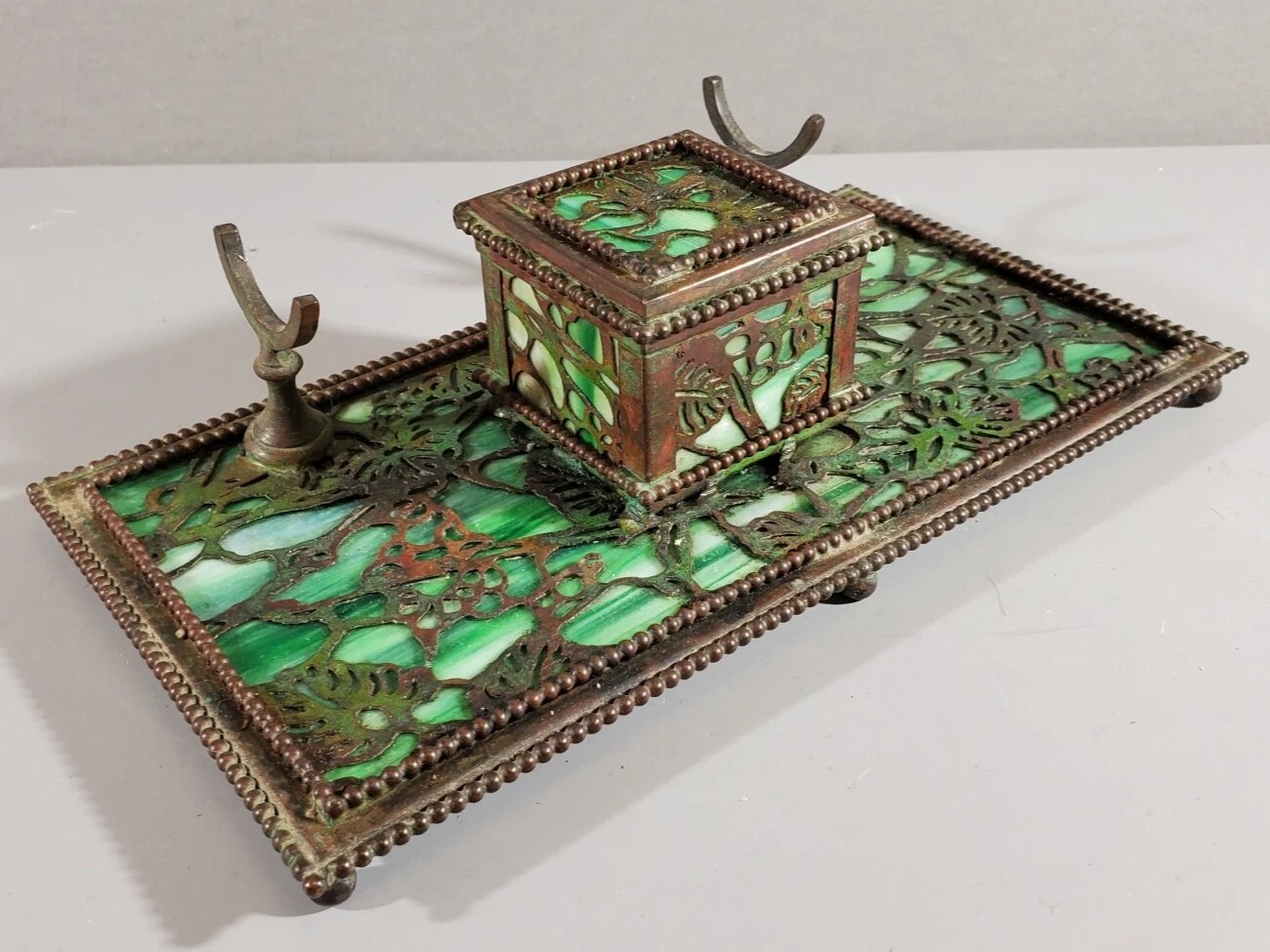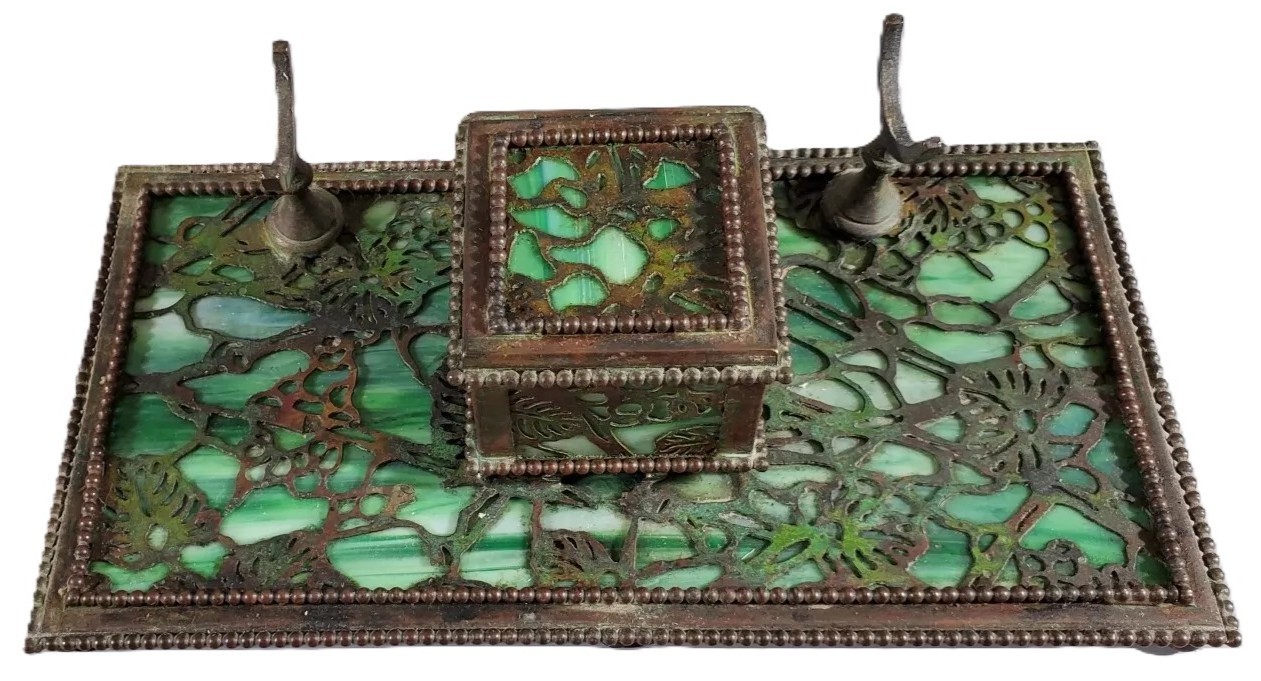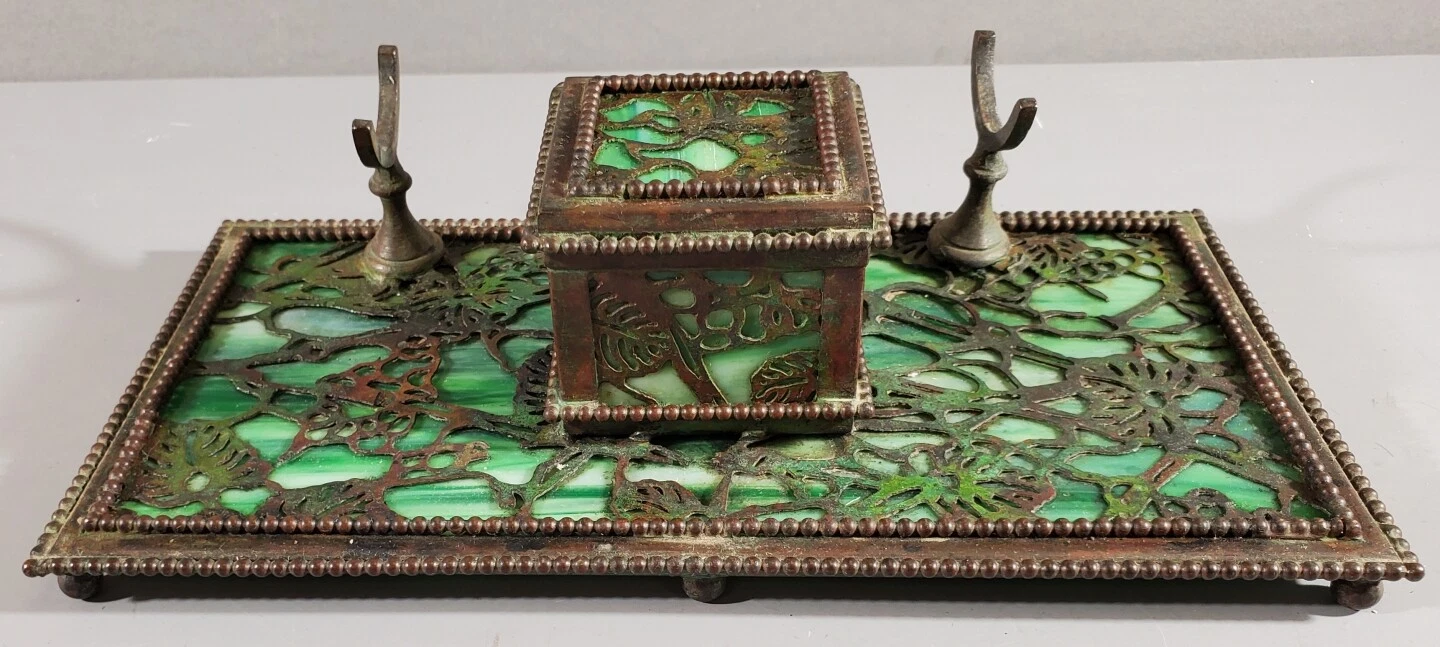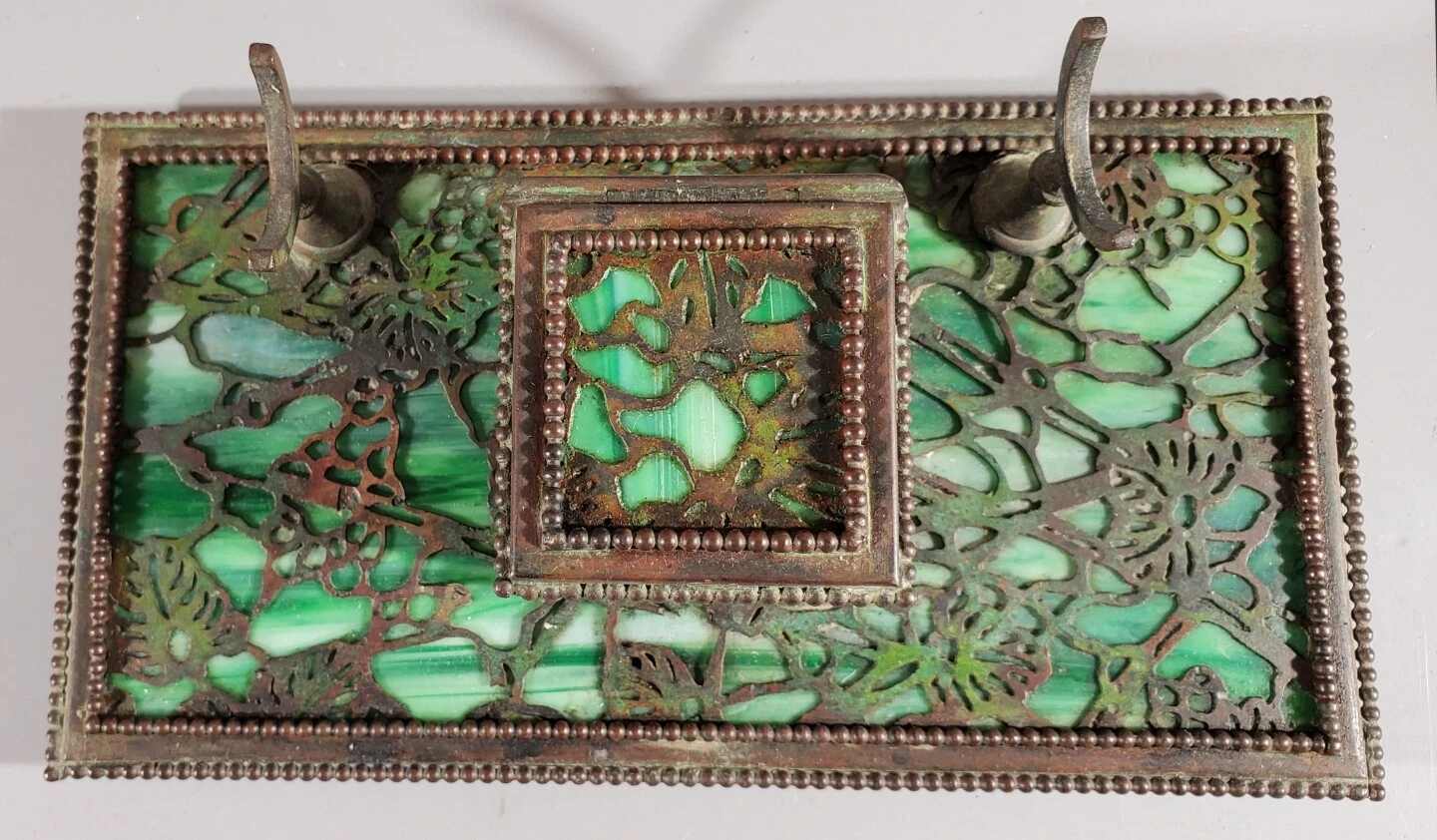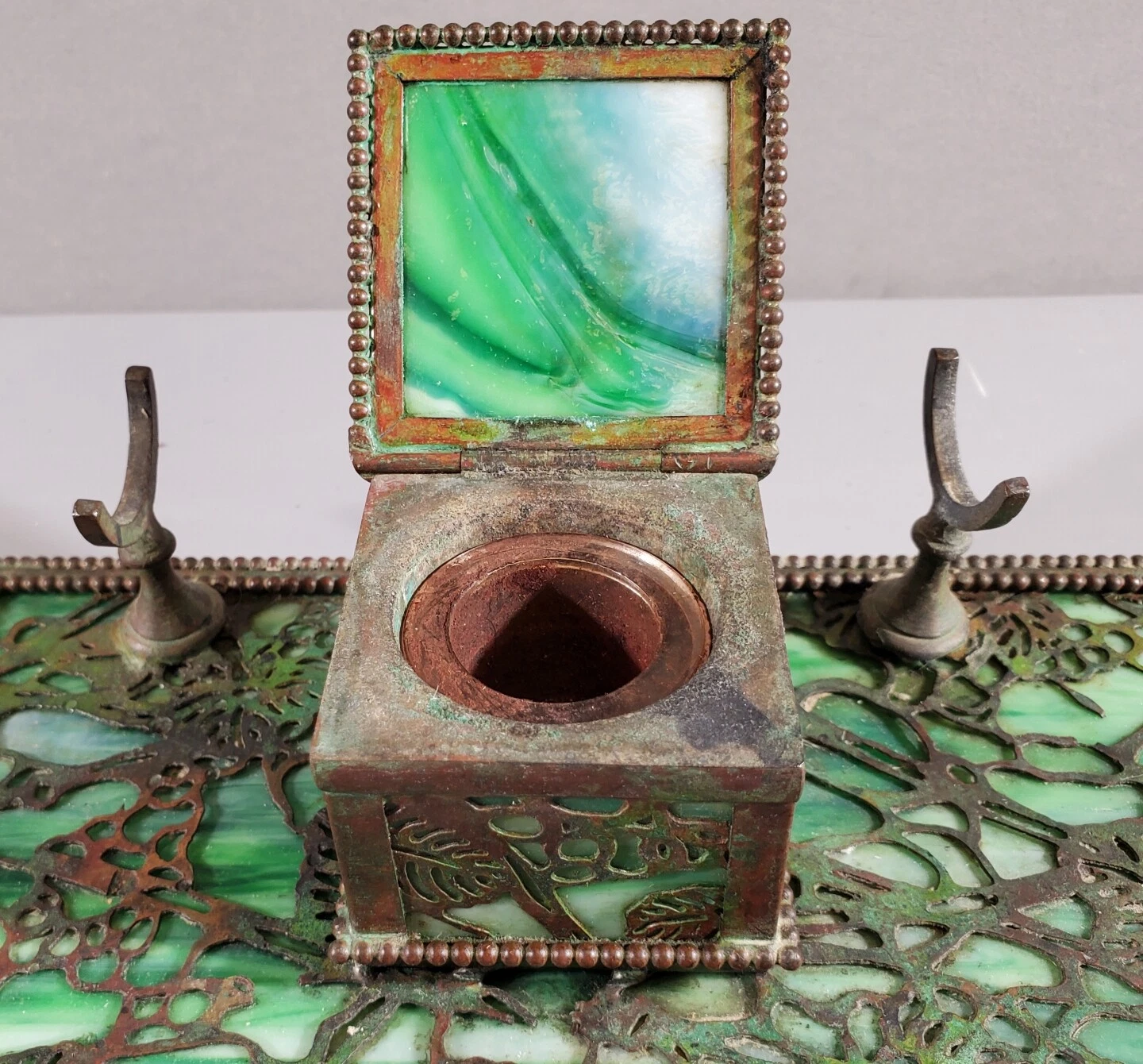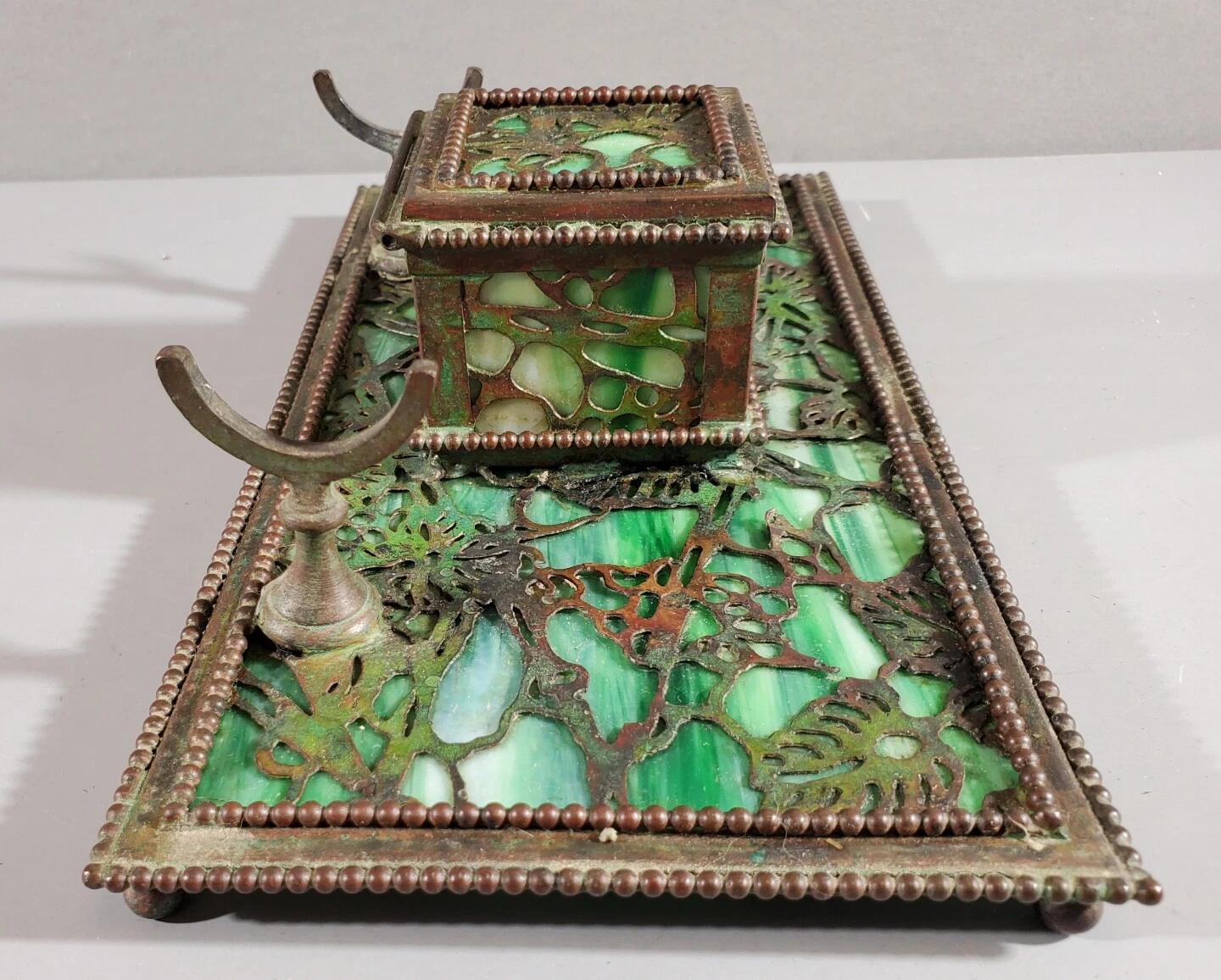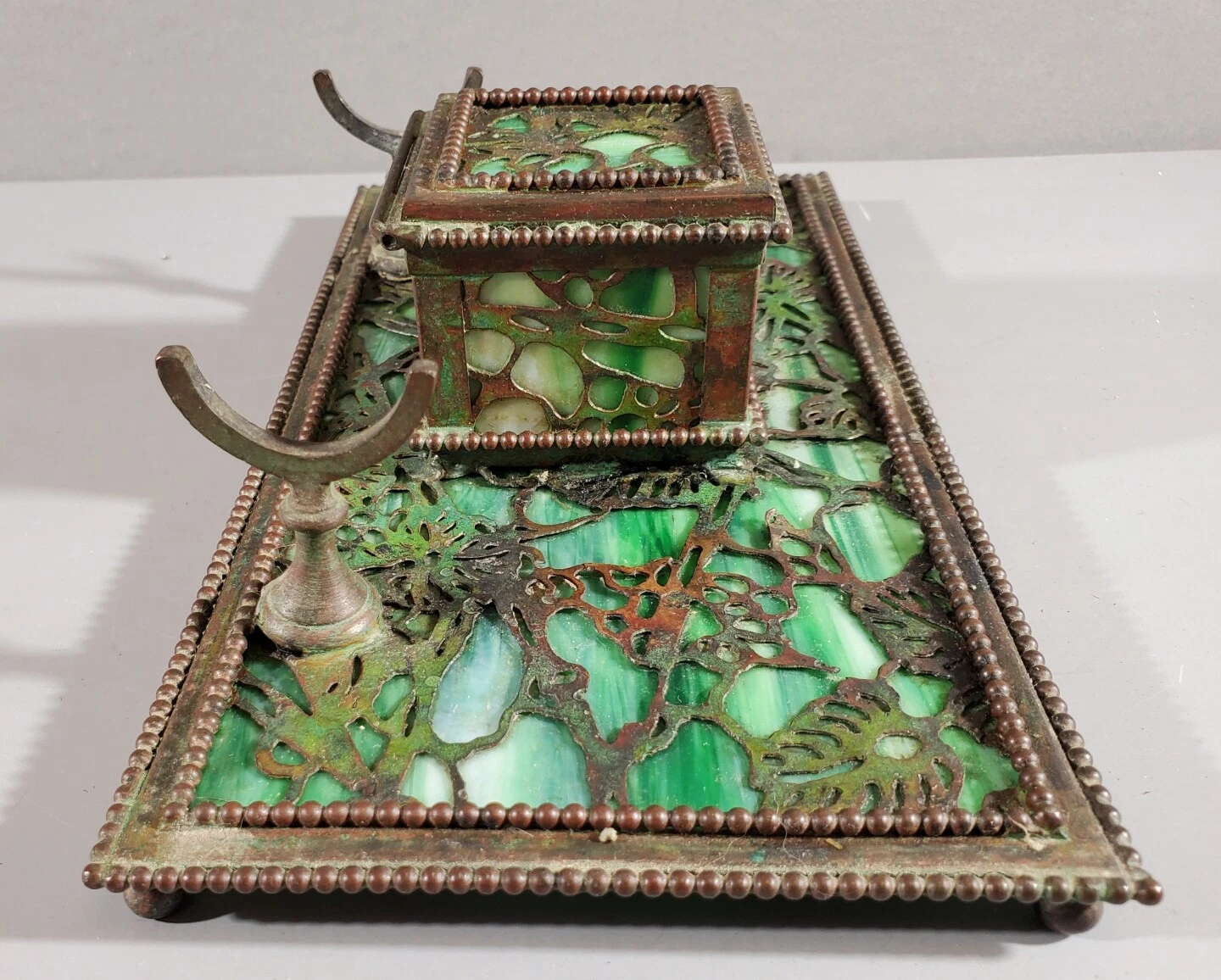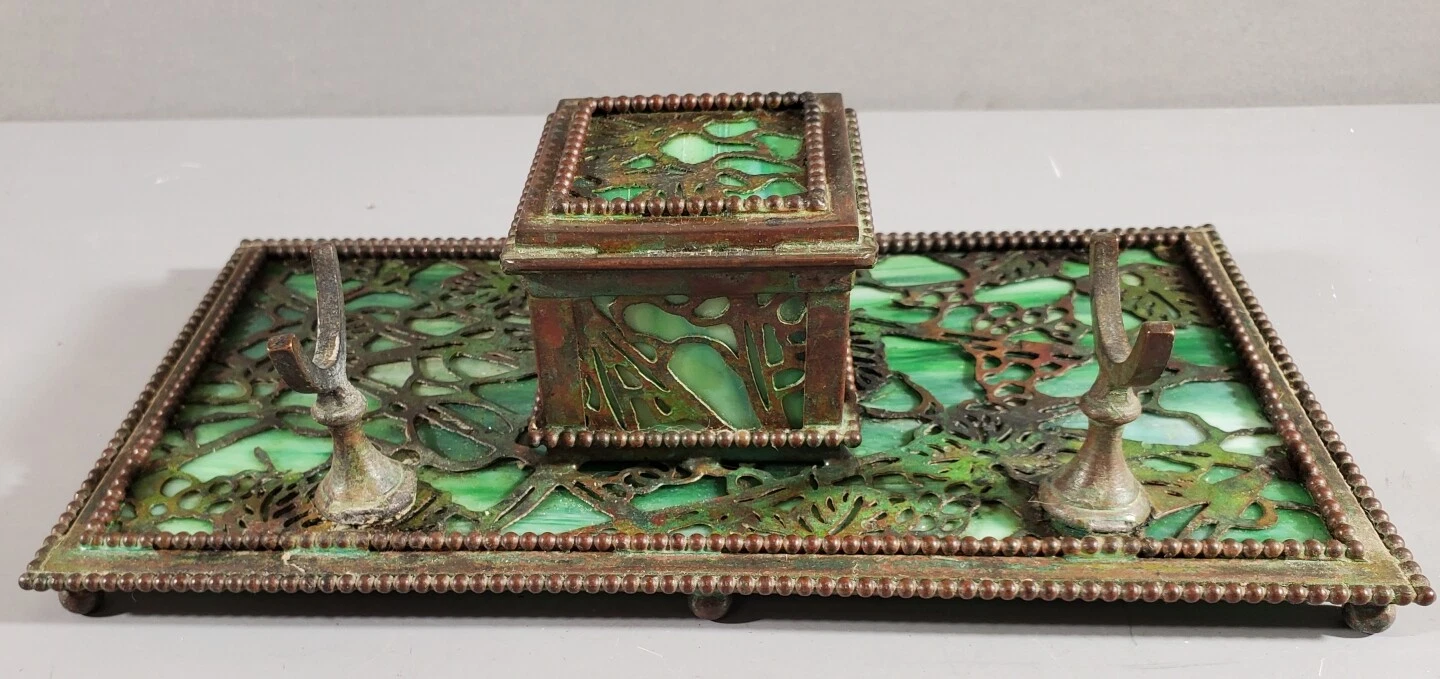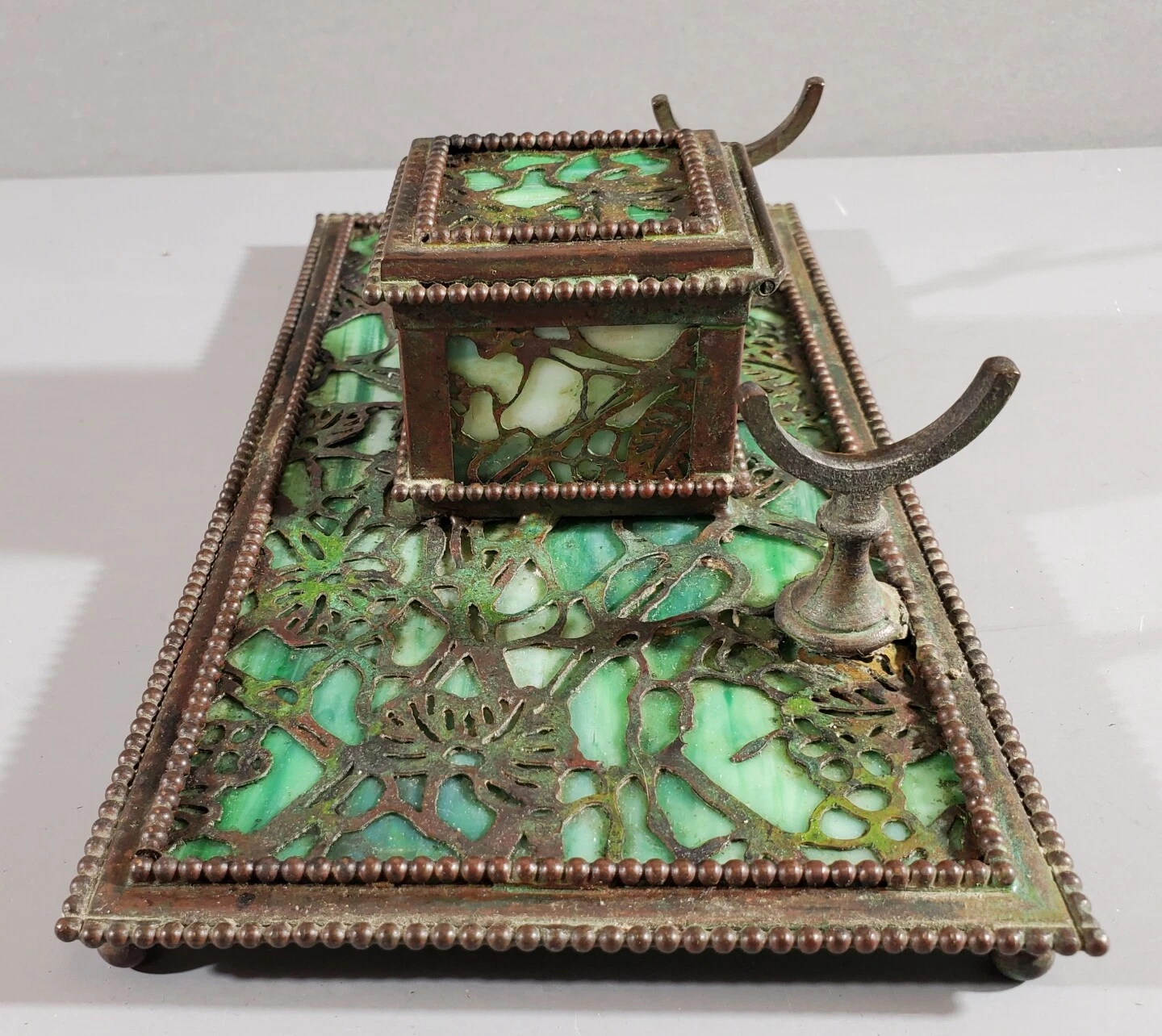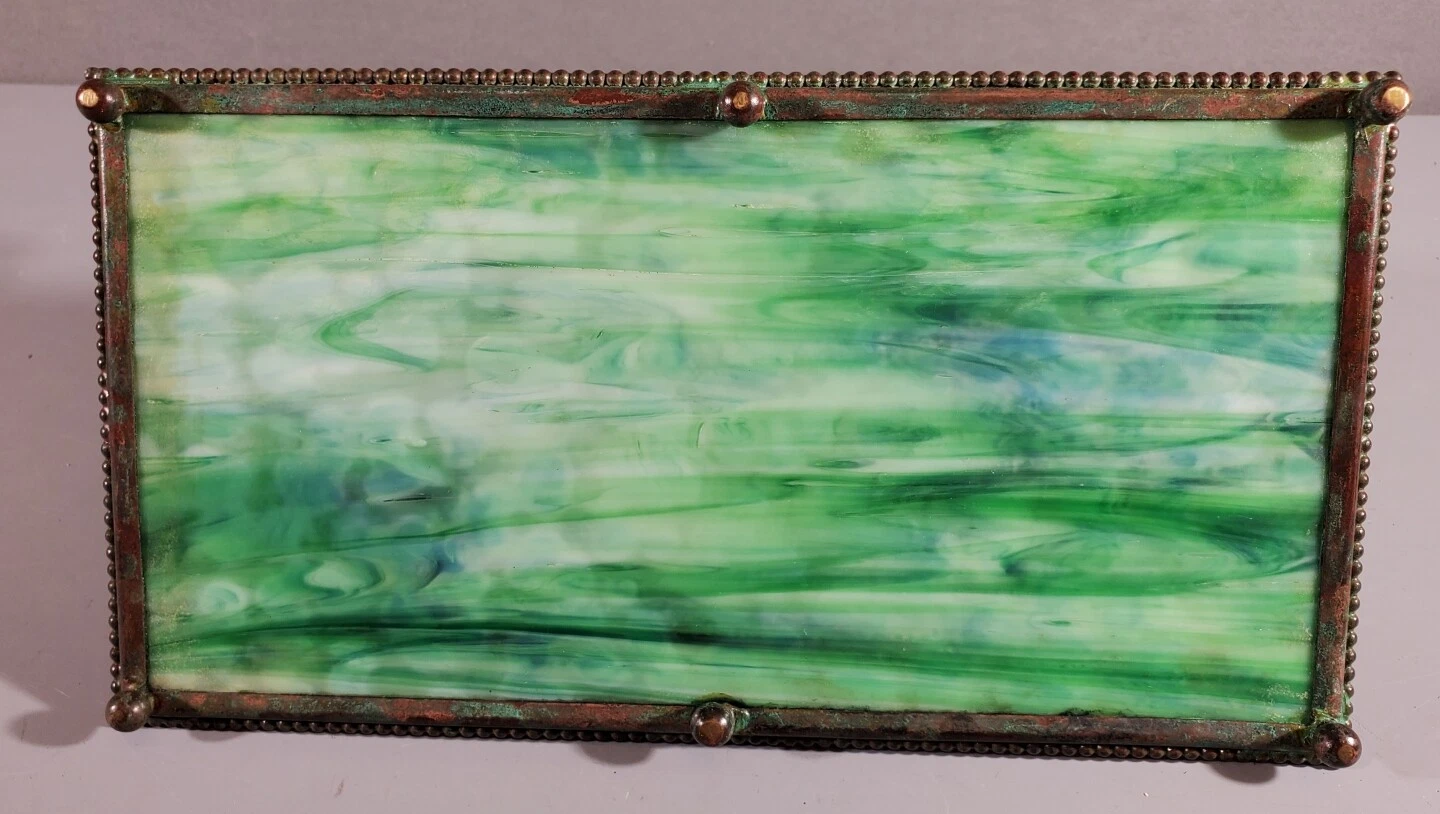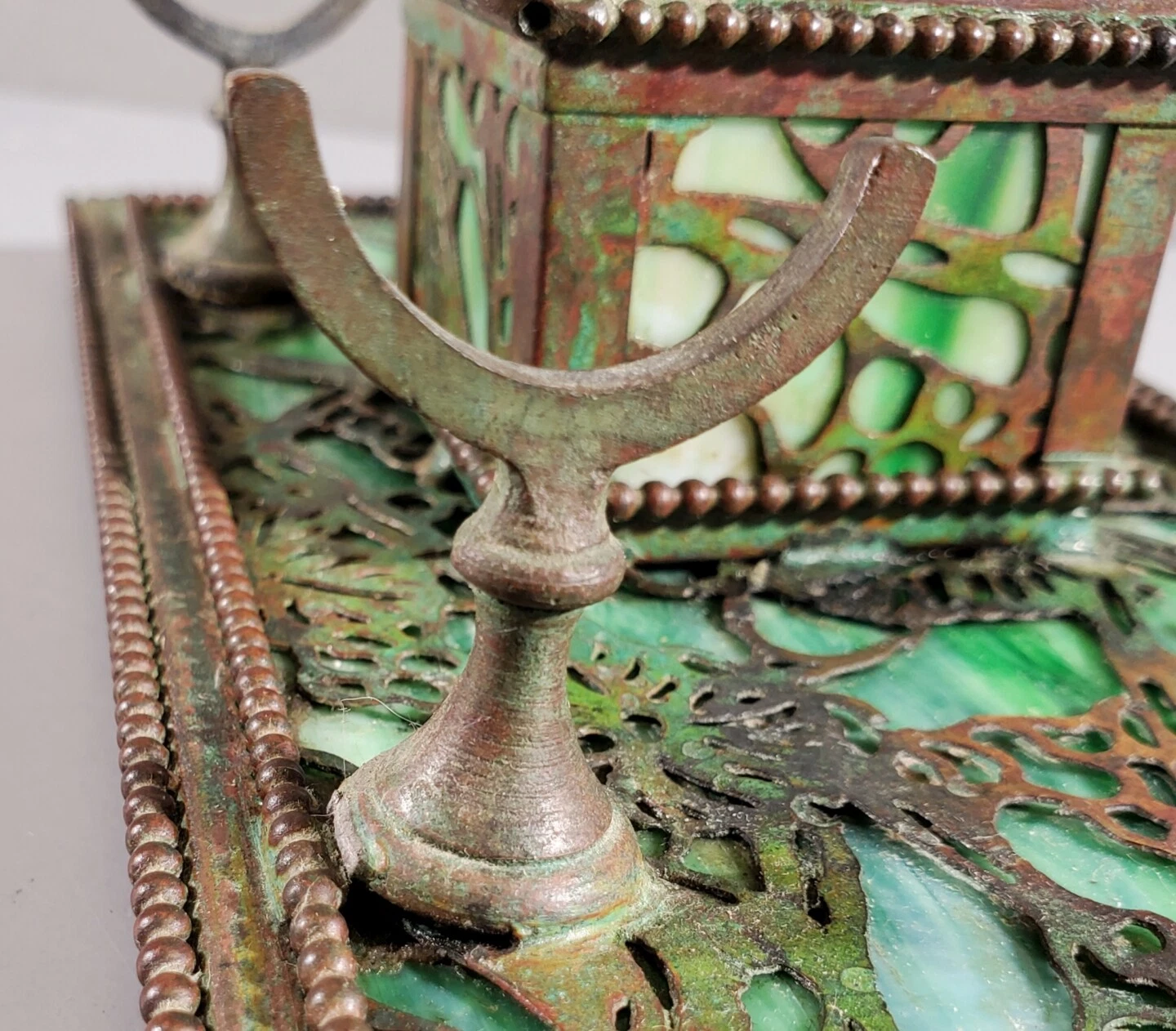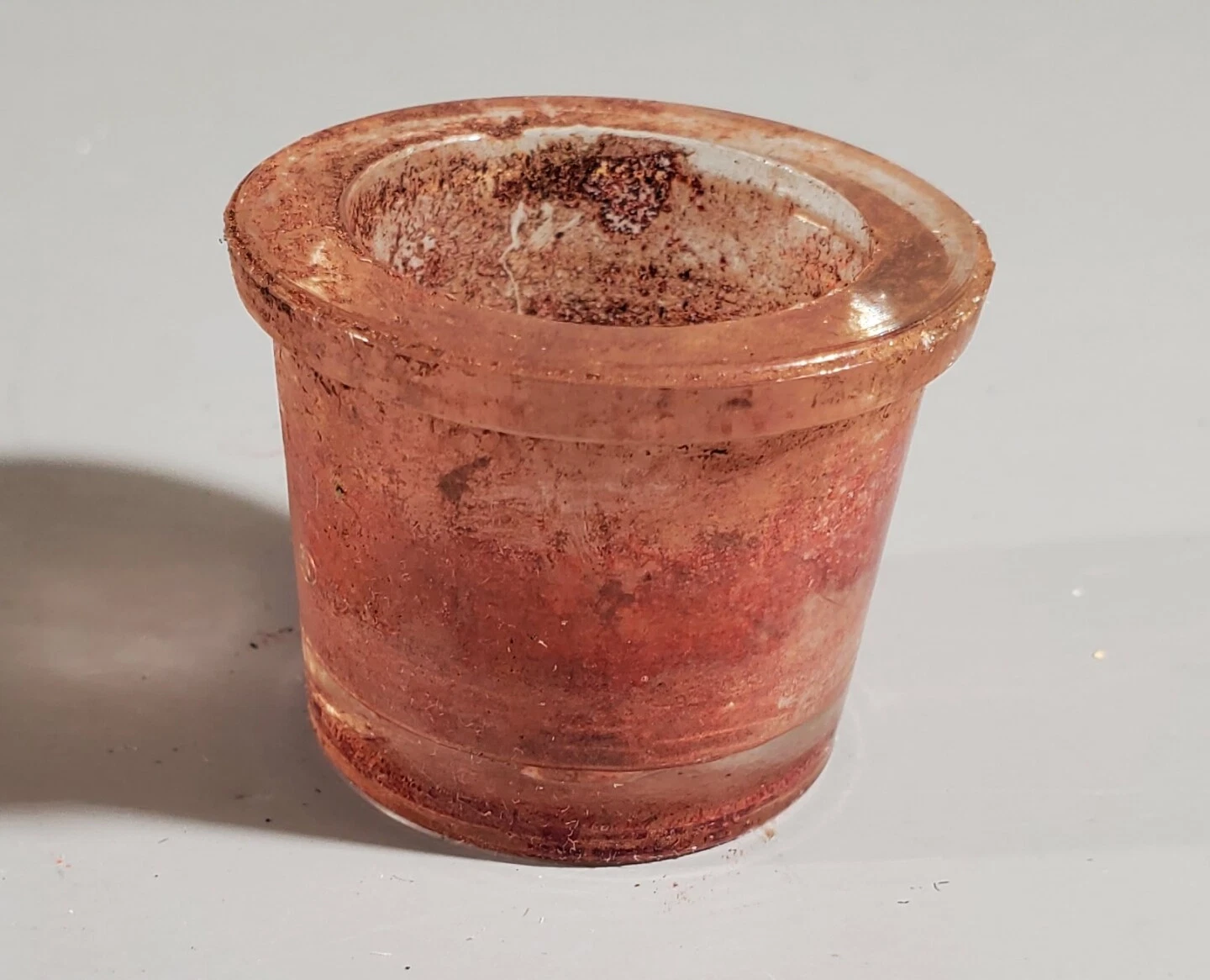
Riviere Studios Grapevine Inkstand
| Categories | Art Nouveau |
| Material | Bronze, Glass |
| Markings | Unmarked |
| Manufacturer | Riviere Studios |
| Origin | United States |
| Date or Era | circa 1910 |
| Measuring | 9 ⅛” x 5” |
Description of the Desk Item:
- Overall Composition: The desk item is a singular, integrated piece, serving as an inkstand and a general desk tray. It features a harmonious combination of bronze metalwork and vibrant art glass.
- Tray Base: The foundation is a flat, rectangular tray base.
- Bronze Frame: The perimeter of the base is framed by double raised beaded borders in bronze.
- Glass Inlay: The central area of the tray is filled with multi-tonal green glass.
- Pierced “Grapevine” Design: Overlying and integrated with the glass inlay is an exquisite bronze pierced “grapevine” pattern design. This openwork metalwork features intertwining vines, leaves, and clusters of grapes, characteristic of the Art Nouveau movement’s embrace of natural forms.
- Feet: The base is supported by six bronze ball feet, which lift the piece slightly.
- Pen Brackets: Attached to the base are bronze pen brackets, designed to securely hold one pen.
- Inkwell: An inkwell is integrally attached to the base. It echoes the design of the base, featuring the same grapevine pattern and beaded borders around its circumference. The inkwell is fitted with a hinged lid, also made of bronze, which features a continuation of the grapevine motif.
- Glass Description (Slag Glass): The glass used in both the tray and the inkwell is slag glass. Slag glass (also known as marble glass or malachite glass) is opaque or semi-opaque and characterized by its streaky, swirling, multi-tonal appearance, blending different shades of the same color (like green in this case) or contrasting colors. This effect is created by mixing different colors of glass or impurities into the molten glass during manufacture. It’s distinct from clear or transparent art glass. It is not Favrile glass, which is a trademarked iridescent art glass produced by Tiffany Studios.
Relationship between Riviere Studios and Tiffany Studios:
Riviere Studios and Tiffany Studios were contemporary and significant producers of art glass and metalware during the Art Nouveau period in the United States, and they had a close, albeit sometimes competitive, relationship.
- Louis C. Tiffany (founder of Tiffany Studios) and Max Gessner (a key figure at Riviere Studios) were prominent innovators in art glass.
- Gessner’s Background: Max Gessner was a talented metalworker and designer who had previously worked for Tiffany Studios. This background meant he was intimately familiar with Tiffany’s techniques and aesthetic.
- Shared Aesthetic: Both studios excelled in the Art Nouveau style, incorporating naturalistic motifs (like grapevines, leaves, flowers, and insects) and utilizing innovative glass techniques.
- Supplier/Collaborator (Indirectly): While Riviere Studios produced their own metalwork, they were known to purchase glass from various glasshouses, including sometimes from Tiffany Furnaces (which produced Favrile glass), though they also sourced from other notable glassmakers like Pairpoint Corporation. For this piece, the multi-tonal, swirled opaque nature clearly points to slag glass, not Favrile.
- Competition and Influence: They were direct competitors in the market for high-end desk sets, lamps, and decorative accessories, but also influenced each other stylistically. Riviere Studios often provided a slightly more affordable, yet still high-quality, alternative to Tiffany’s often higher-priced Favrile glass lamps and desk sets.
History of Riviere Studios:
- Founding: Riviere Studios was founded in New York City by Louis Riviere and Max Gessner (though Gessner became the driving artistic and production force) in the late 19th century. The company operated primarily from around 1895 to the 1920s.
- Products: They were renowned for their exquisite bronze and art glass lamps, desk sets, and decorative accessories that often featured a combination of metal overlay (like the grapevine pattern on this piece) and patterned or textured art glass. Their designs were strongly influenced by the Art Nouveau movement, emphasizing organic forms, fluid lines, and rich patinas on their bronze work.
- Quality: Riviere Studios maintained a high standard of craftsmanship, using quality materials and employing skilled artisans for their metal casting, patination, and glass work.
- Dissolution: Like many Art Nouveau firms, Riviere Studios eventually ceased operations, partly due to changing tastes in the post-WWI era and the economic shifts of the early 20th century.
Sold for $465 in June 2025
Content disclaimer. The information posted is the owner’s best knowledge and may not have been vetted by the SOIC. We welcome comments, corrections, and additions, working to make our website information comprehensive and accurate.
Join the Society of Inkwell Collectors (SOIC) – it’s free!
Founded in 1981 as a non-profit organization,
we are documenting inkwells (and accessories).
We’re here to help and inform!
